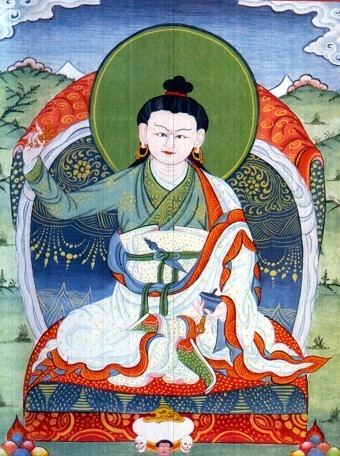 | ||
Fearless in tibet the life of the mystic tert n sogyal by matteo pistono book trailer
Tertön (Tibetan: གཏེར་སྟོན་, Wylie: gter ston) is a term within Tibetan Buddhism. It means a person who is a discoverer of ancient hidden texts or terma. Many tertöns are considered to be incarnations of the twenty five main disciples of Padmasambhava. A vast system of transmission lineages developed. Nyingma scriptures were updated by terma discoveries, and terma teachings have guided many Buddhist and Bon practitioners.
Contents
- Fearless in tibet the life of the mystic tert n sogyal by matteo pistono book trailer
- Prominent tertns
- The Five Tertn Kings
- The Eight Great Lingpas
- Tertn practices
- References
Prominent tertöns
According to generally accepted history, the rediscovering of terma began with the first tertön, Sangye Lama (1000–1080). Tertöns of outstanding importance were Guru Chowang (1212–1270), Rigdzin Gödem (1307–1408), Dorje Lingpa (1346–1405), Ratna Lingpa (1403–1478), Pema Lingpa (1450–1521), Namchö Mingyur Dorje (1645–1667), and Jigme Lingpa (1729–1798), Jamyang Khyentse Wangpo (1820–1892) and Orgyen Chokgyur Lingpa (1829–1870).
The "seal" of all tertöns is said to have been Jamyang Khyentse Wangpo (1820–1892). In one of his visions, he could clearly see all the terma that were hidden throughout Tibet and other countries. He was the only master in Tibetan history to have not only received, but also transmitted the "seven transmissions" (bka' babs bdun), that are the canonical teachings, treasures taken from the earth, reconcealed treasures, mind treasures, recollections, pure visions, and aural transmissions received in visions. (Ricard, undated).
The Five Tertön Kings
Throughout the centuries many more people were known as tertön. Five of them were widely recognized as very important ones and called the "five tertön kings:"
- Nyangral Nyima Özer (1124–1192)
- Guru Chökyi Wangchuk (1212–1270)
- Dorje Lingpa (1346–1405)
- Pema Lingpa (1445/50–1521)
- Jamyang Khyentse Wangpo (1820–1892)
Another noteworthy tertön is Tsangpa Gyare, founder of the Drukpa Lineage (12th century).
The Eight Great Lingpas
The Eight Great Lingpas (Tibetan: གླིང་པ་བརྒྱད་, Wylie: gling pa brgyad) were eight important tertöns in the Nyingma lineage of Tibetan Buddhism. They are listed as:
Tertön practices
Consorts, with whom they practice sexual yoga or karmamudra to accelerate and enhance their capacity for realization, are thought to be very important to tertöns. Fremantle (2001: p. 19) states that:
One of the special requirements for the discovery of termas is the inspiration of the feminine principle, just as it was necessary for their concealment. The great majority of tertöns have been men, and generally they are accompanied by their wives or female companions (who need not necessarily have a sexual relationship with them). Alternatively, something representing the tertön's complementary energy, whether male or female, must be present.
Yet, even very realized female practitioners bring forth terma, sometimes with an living male consort and sometimes alone. Dakini Sera Khandro is a notable example of a woman tertön.
